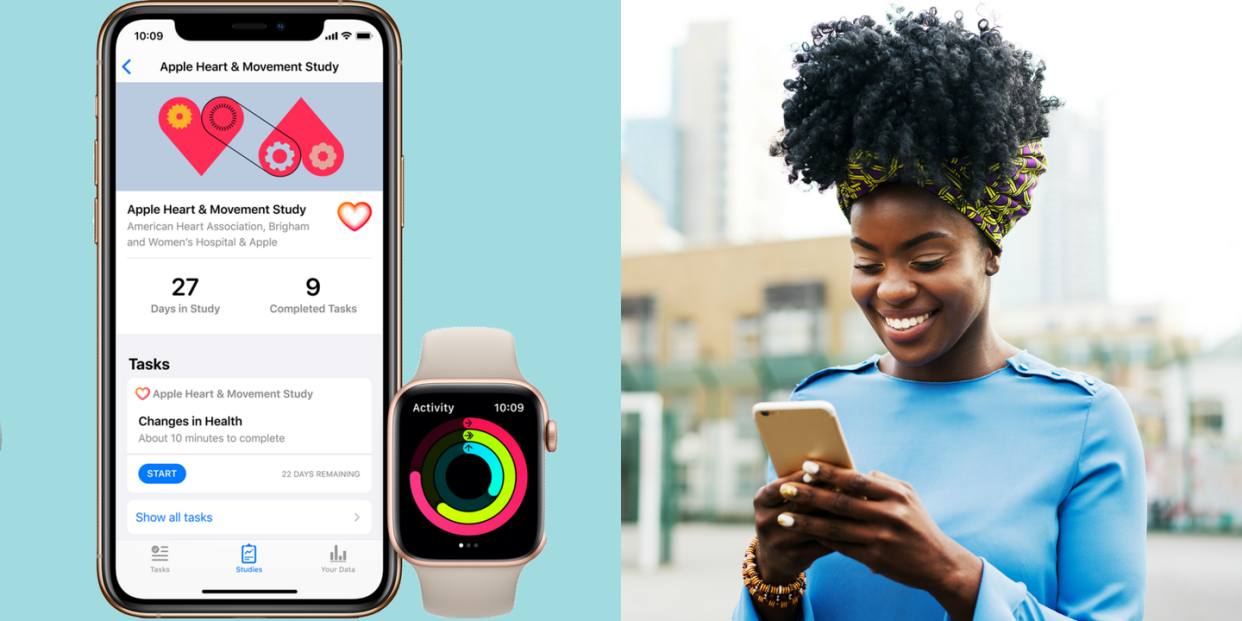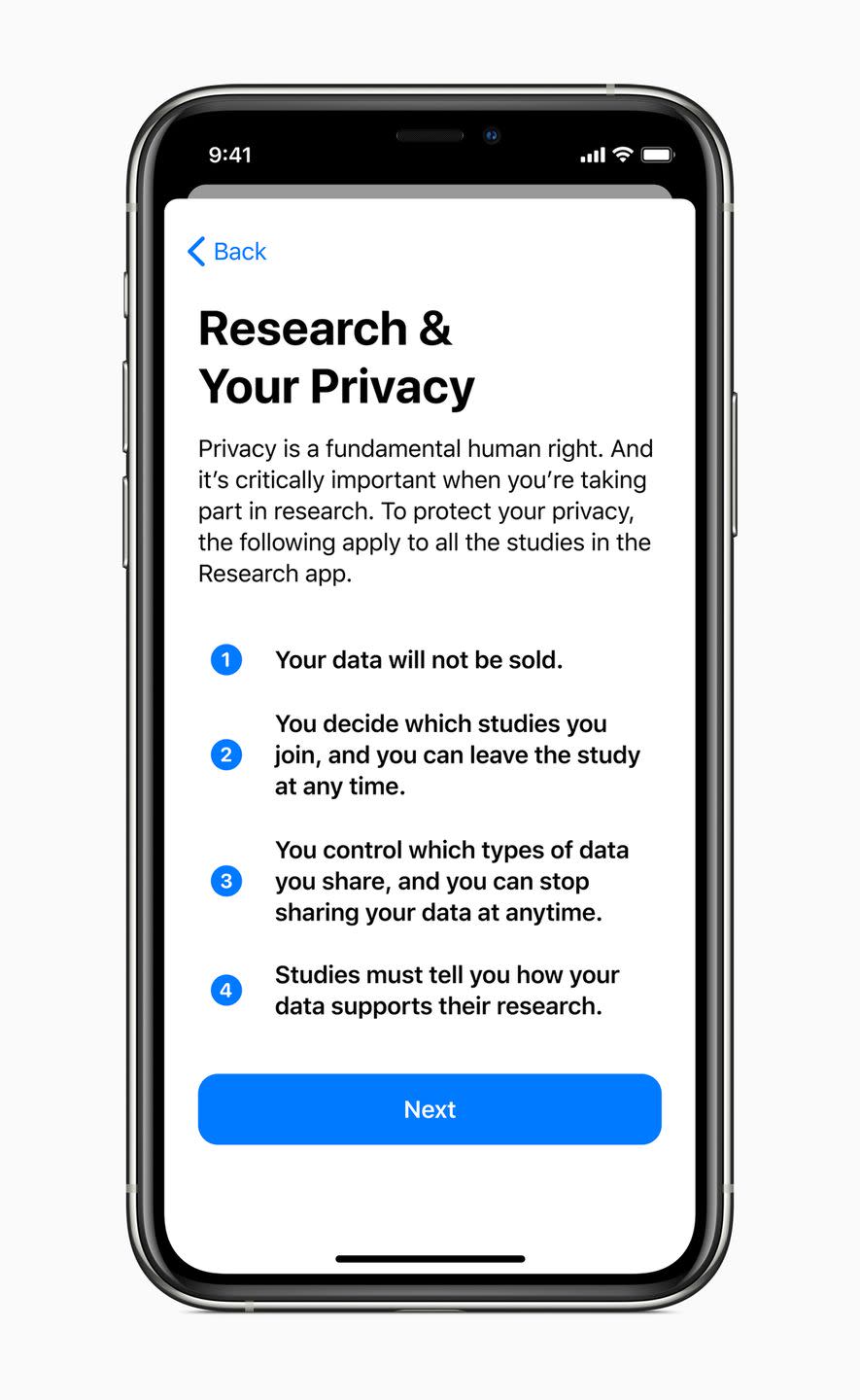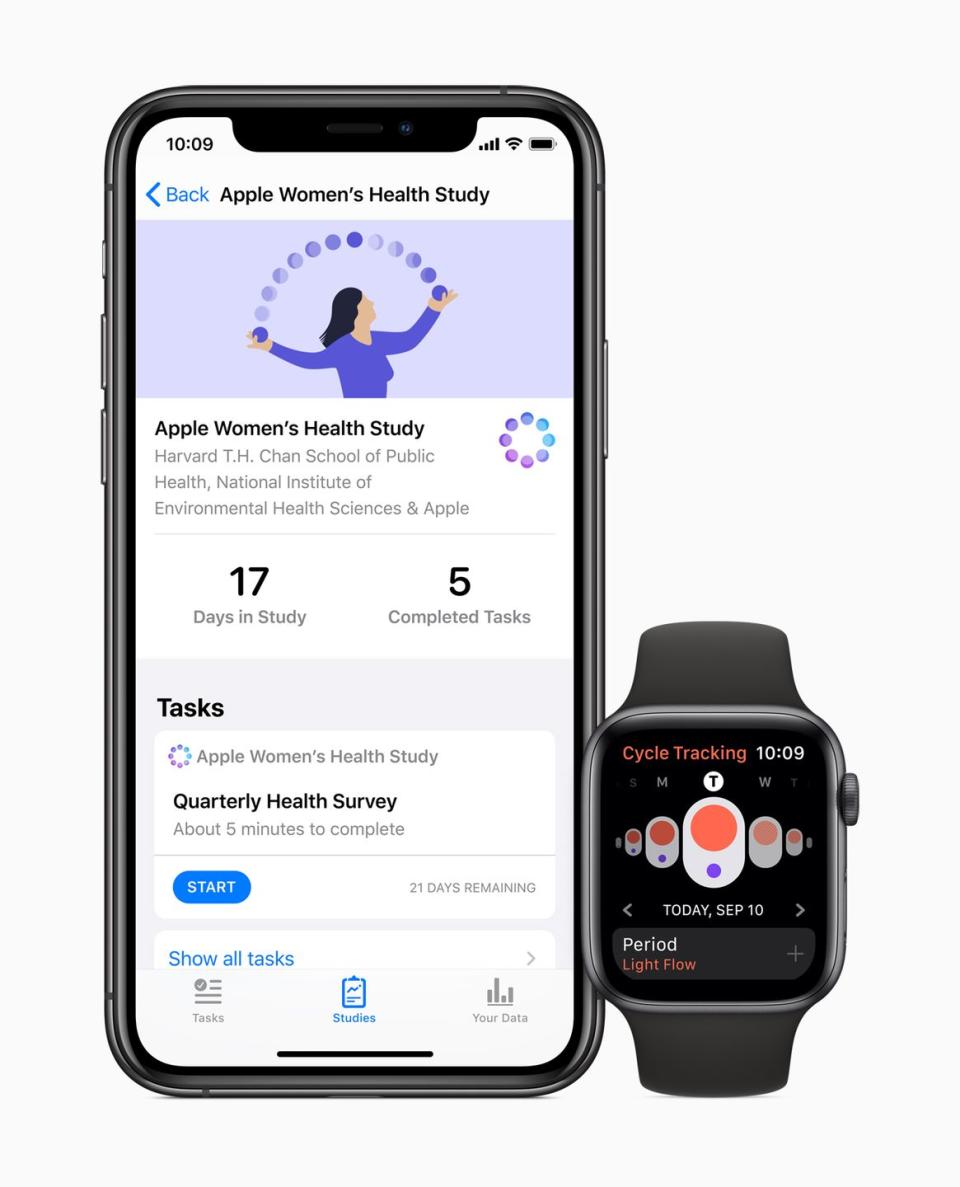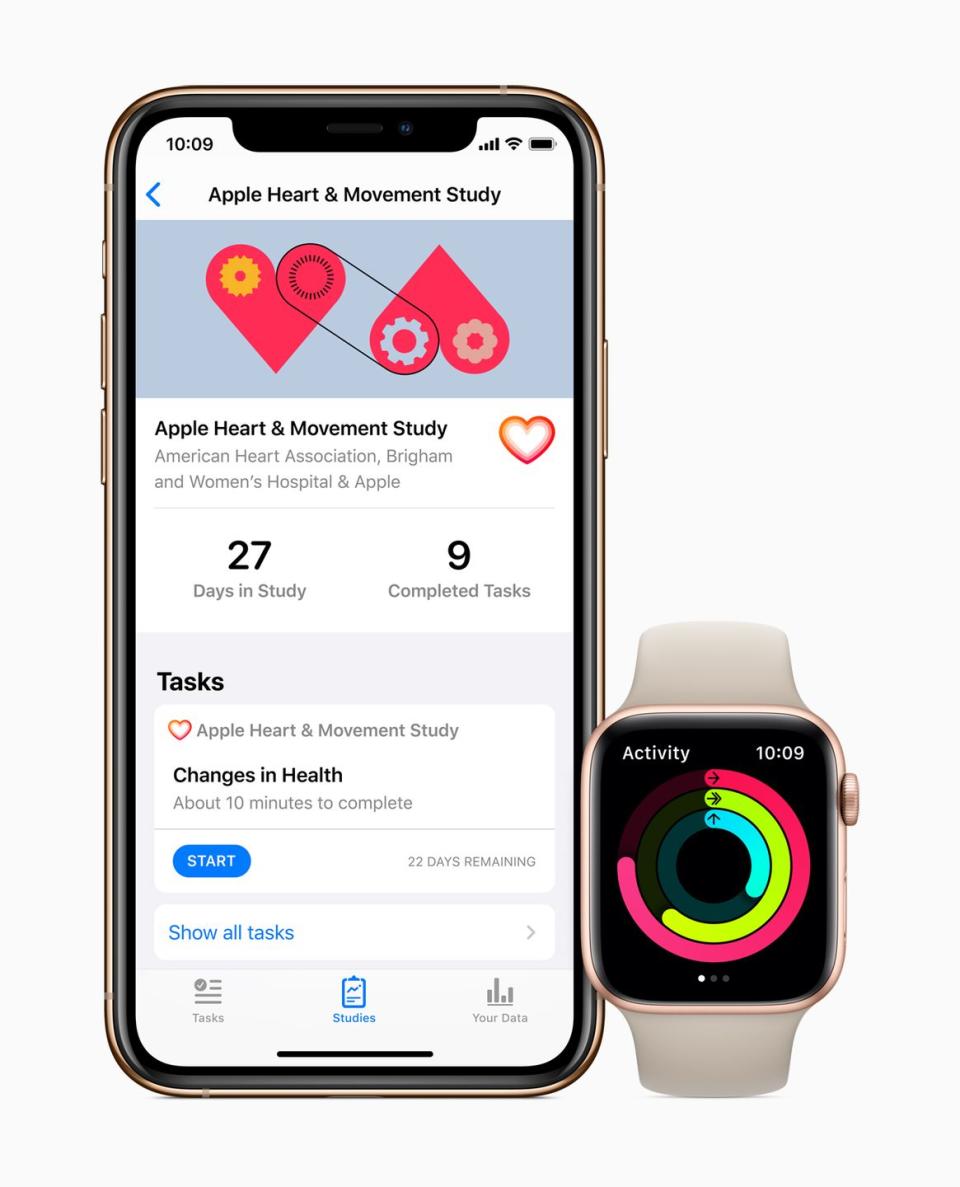Apple Announces New Research App and 3 Major Health Studies for iPhone and Watch Users

This morning, Apple announced a new Research app that allows iPhone and Apple Watch users to participate in studies conducted in partnership with top health organizations in the U.S. The news comes on the heels of Google's announcement earlier in the week that it, after acquiring Fitbit for $2.1 billion, will begin analyzing the personal health data on millions of people in a deal with the country's second biggest hospital system Ascension. (And yes, that’s legal.)
Tech giants have long been carving their way into the health-sphere, and Apple already has a rich history in building medical-serving functions into the Apple Watch. But while Google is teaming up with health care providers and Amazon has been rumored to be innovating on how to sell generic drugs, Apple is now leveraging its position as the No. 1 smartwatch in America (Apple is said to have shipped more than 22 million units in 2018, compared to the second biggest seller, Fitbit, which shipped 5.5 million units last year, according to NPD data) to allow users to opt into scientific research. This is the smartest approach out of the three, in my opinion, because it puts the user at the helm, and offers a meaningful incentive to its customer for sharing data: Your health information can be used for the greater good of society, rather than solely for corporate benefit.
Apple Watch has tracked daily steps, monitored heart rates, and more since first debuting in 2015. Over the years, it’s become commonplace to wear a smartwatch and check up on our numbers in an accompanying app. In other words, we’ve gotten pretty used to the idea that our chosen wrist candy can track what we’re doing. With Apple’s new Research app, it’ll be interesting to see how comfortable—or not—the public is with the idea of sharing their health data with an academic third party.
Google tried something similar, with Verily (formerly Google Life Sciences) in 2015. Back then, they partnered with Duke, Stanford, and the American Heart Association on the very Silicon Valley apropos goal to "map human health." But the project ultimately failed in 2011. This was four years before the launch of Apple Watch and only two years after Fitbit debuted its first device in 2009. In 2019, the timing for such an ambitious endeavor might be better aligned.
Starting right this minute, you’ll find the new Research app in the App store. Download it, and you’ll be able to enroll in three health studies: the Apple Women’s Health Study, the Apple Heart and Movement Study, and the Apple Hearing Study.
“These multi-year longitudinal studies, conducted in partnership with leading academic and research institutions, will allow participants to use iPhone and Apple Watch to contribute to potential medical discoveries and help create the next generation of innovative health products,” Apple said in a statement. “Traditionally, it has been difficult to enroll large numbers of study participants into clinical research as it has required extensive paperwork and in-person check-ins. The Research app significantly simplifies the experience with a streamlined enrollment and participation process that is straightforward and secure.”
Yes, Apple has thought about your privacy. You'll find this in the app:

The project we’re most excited about is the The Apple Women’s Health Study. Done in partnership with Harvard T.H. Chan School of Public Health and the NIH’s National Institute of Environmental Health Sciences (NIEHS), it’s the first long-term study of this scale and scope, according to Apple, aiming to advance the understanding of menstrual cycles and their relationship to conditions like polycystic ovary syndrome (PCOS), infertility, osteoporosis and menopausal transition.

“Women make up half of the world’s population, yet even today there has been limited investment in studying their unique health needs. This study, unprecedented in scope, will greatly advance our understanding of the biological and social determinants of women’s health, and lead to better health outcomes,” said Michelle A. Williams, a reproductive epidemiologist and dean of the faculty at the Harvard T.H. Chan School.
Apple said the study will use iPhone and Apple Watch to collect study-specific data like cycle tracking information, and use monthly surveys to understand each participant’s unique menstrual experience.
Then there’s The Apple Heart and Movement Study, in partnership with Brigham and Women’s Hospital and the American Heart Association. This research aims to understand how certain mobility signals and details about heart rate and rhythm could serve as potential early warning signs of Afib, heart disease or declining mobility, with the goal of building new interventions that could help consumers lead longer, healthier and more active lives, according to Apple. Volunteers for the study must have an Apple Watch Series 1 or later to participate.

Last but not least, there’s The Apple Hearing Study, in partnership with the University of Michigan. Through the Research app, they’ll collect headphone usage and environmental sound exposure data through iPhone and the Noise app on Apple Watch, in order to explore how both can impact hearing over time. The study will also determine how long-term sound exposure can impact stress levels and cardiovascular health, per Apple. Data from the study will also be shared with the World Health Organization (WHO)’s Make Listening Safe Initiative to raise awareness of safe listening practices with the aim of reducing hearing loss.
The one drawback? You must be an iPhone user to participate in all three studies—and own and iPhone as well as an Apple Watch to participate in the Heart and Movement Study. The cheapest iPhone you can by is now an iPhone 8, at $450. You can get an Apple Watch Series 1 for $190, making the cost of entry $640. But given that iPhone users already make up 10% of the global population, you may not need to shop to join at all.
Like what you just read? You’ll love our magazine! Go here to subscribe. Don’t miss a thing by downloading Apple News here and following Prevention. Oh, and we’re on Instagram too.
You Might Also Like

